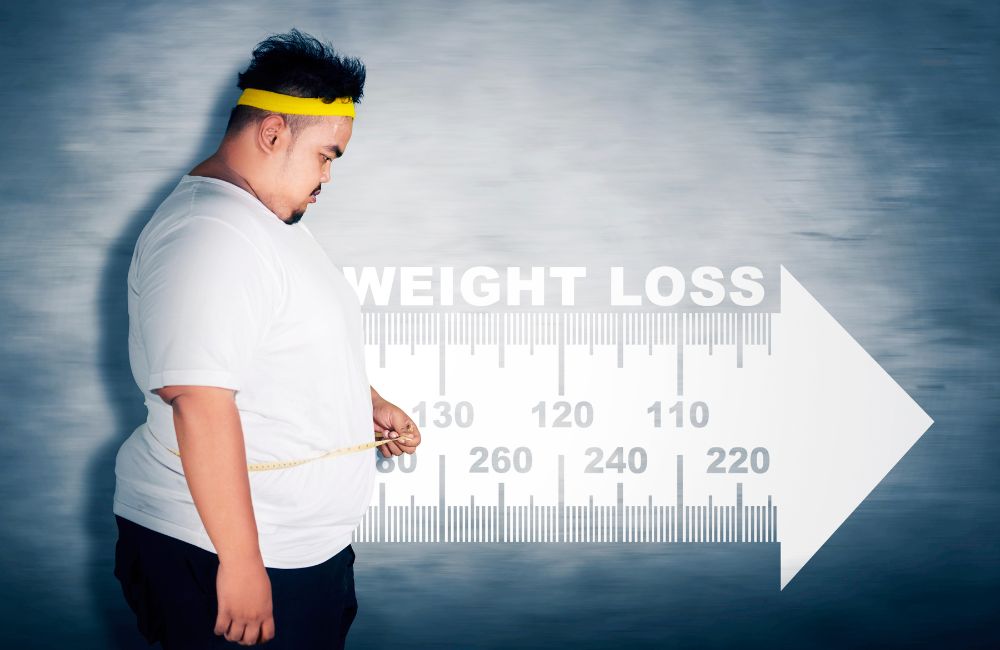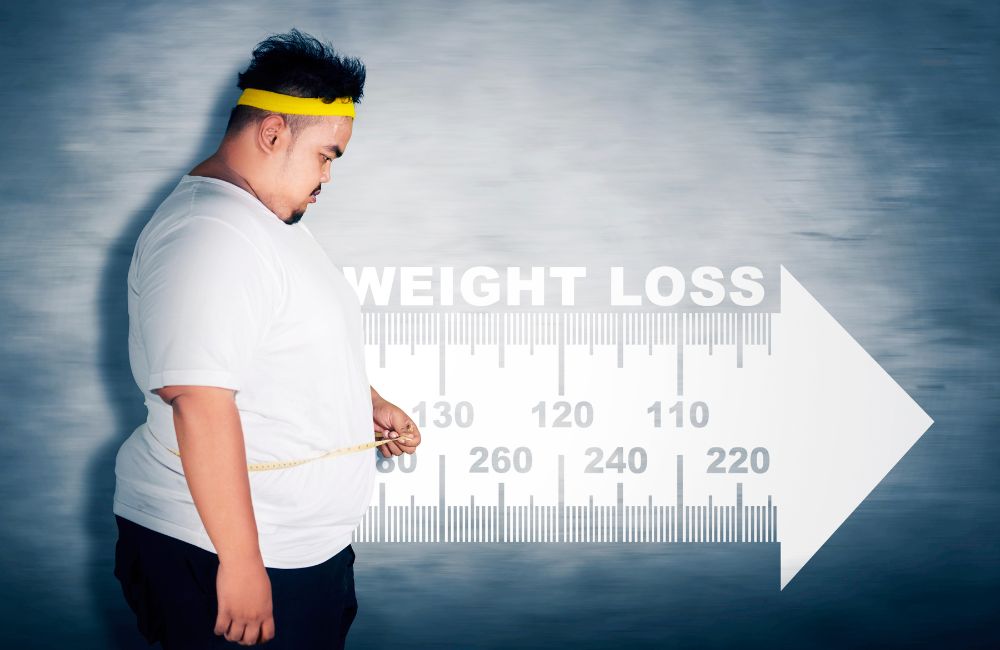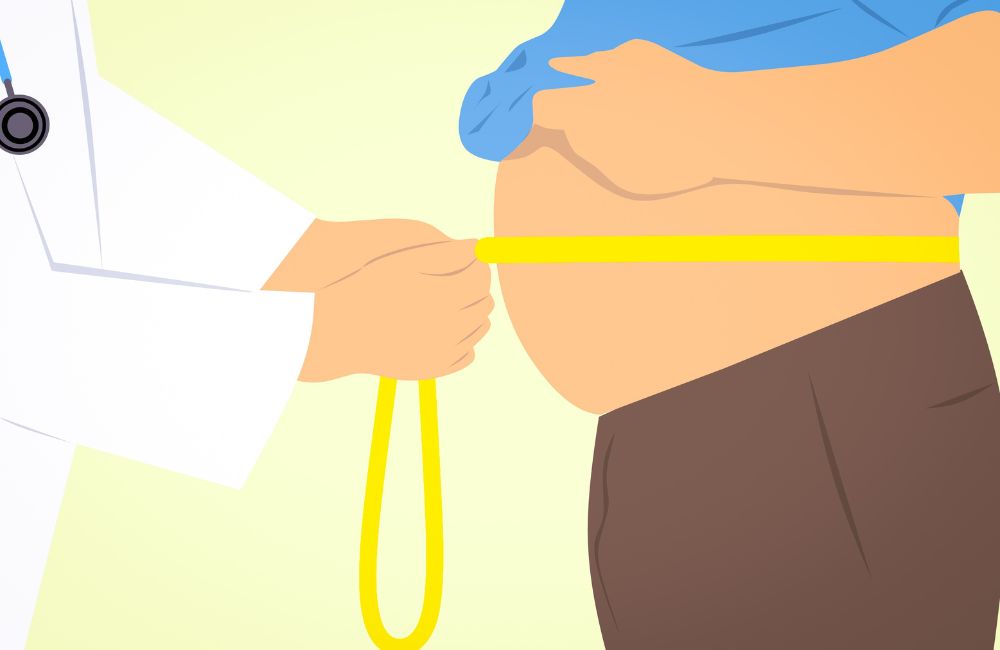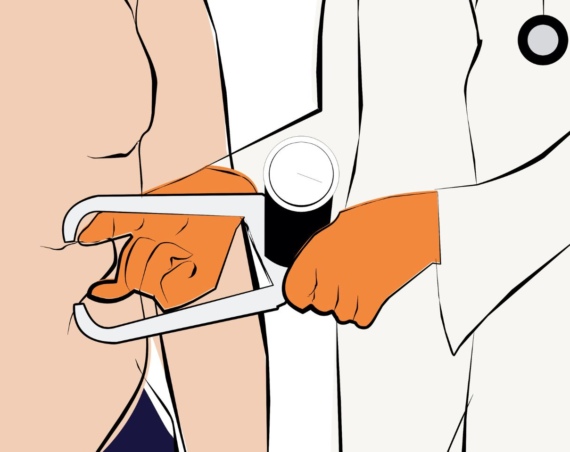
Let’s be honest, weight loss is a journey, and tackling a 100-pound goal can feel daunting. But here’s the good news: it’s absolutely achievable, and you don’t have to go it alone!
This guide offers 10 proven and expert-backed strategies to help you lose weight safely and sustainably, whether you’re just starting out or nearing the finish line of your 100-pound transformation.
Get ready to:
- Feel empowered and in control of your health journey.
- Discover strategies that fit your lifestyle and preferences.
- Celebrate milestones and see lasting results.
Let’s dive into the 10 best-proven tips to help you conquer your 100-pound weight loss goal!
How to Lose 100 Pounds Fast and Safely

You may also like:
- How to Lose 30 Pounds In a Month: 12 Simple Steps, Backed by Science
- How to Lose 20 Pounds In a Month: 8 Science-Backed Steps
1. Start Your Day With a Healthy Breakfast
Making sure you eat a breakfast meal in the morning may seem like a different approach to losing weight, especially if you’ve skipped this meal for a long time.
However, the key to a healthy diet is consistent meals throughout the day to avoid hunger spikes.
There’s a reason they say it’s the most important meal of the day.
Establishing healthy habits are the first step to successful weight loss.
And that begins with breakfast.
A hearty breakfast rich in healthy foods can help boost your energy levels at the start of your day and encourage a healthy body weight.
It also helps to balance blood sugar which better controls your hunger hormones throughout the day.
Choose a breakfast that has a good mixture of protein and healthy carbohydrates, preferably from whole foods.
This will not only keep you full for longer but it’s also an effective way to boost performance if you exercise in the mornings.
This could include whole grains such as brown rice, whole grain toasts with natural peanut butter, or a low-sugar greek yogurt with apple slices.
These whole food choices offer a healthy way to start your day.
2. Keep Track Of Your Caloric Intake
In order to successfully lose weight, a calorie deficit is required.
This means taking fewer calories in than calories out or calories “burned.”
Creating a calorie deficit is also one of the fastest ways to lose those extra pounds if done properly.
Tracking your meals at the beginning of your journey can help provide insight into your current calorie range and help you determine where to make adjustments and cut some calories out during your first month.
You can track your calories by using a food diary or an app on your phone such as MyFitnessPal or Lose it.
Your recommended caloric needs will depend on many different factors including age, height, current weight, activity level, and gender.
If you need help determining a calorie range that’s right for you, consider meeting with a Registered Dietitian Nutritionist (RDN).
Counting calories is a great tool to help you learn about the difference in foods and your personal eating habits but is not something that should be heavily relied on during your entire weight loss journey.
Use this tool to establish healthy eating habits that you can continue even after meeting your goal weight.
If you are not wanting to take the counting calories route, choosing small portions and adding in more exercise can help do the trick in a safe way as well.
3. Keep a Food Diary
Similar to tracking your calories, a food diary can be a valuable tool in helping you stay on track with lifestyle changes.
Although calorie intake can help you lose weight, it’s not only about the number of calories.
It’s also about the calorie quality.
Consuming 200 calories from fat versus those from fruits and vegetables will react differently in your body.
A food diary can include a log of what type of food and drinks you consume daily and can provide valuable insight into your current eating habits.
It is also a great way to cut down on junk food calories and improve moderation.
A food diary can be done in many different ways and can include things such as the time you eat, why you are eating/your mood, and the type of food you chose and why.
For example Monday night I chose to eat a Bojangle’s bacon burger with fries and a cup of coleslaw fast food dinner because I didn’t have food in the house to cook.
This can help you make small steps in your day to include things such as meal prep to better avoid these situations in the future when your food choice wasn’t optimum.
Next time you’ll have a tuna sandwich with a handful of almonds and apple slices waiting for you at home.
This is something you will want to do on a regular basis until you feel like you are able to recognize some of these habits and replace them with healthy choices.
Also keeping track of meals and food you eat provides a way to understand how different foods influence your overall caloric intake, hormones, metabolism, and hunger levels.
Examine your food entries on a weekly basis to help make adjustments to your eating habits and build healthier habits.
4. Keep Healthy Snack Foods on Hand
Unhealthy snacking habits are one of the hardest to break.
There are many reasons we might be reaching for snacks aside from hunger, including boredom, stress, and habit.
When we eat with our emotions, we are more likely to choose junk food or carbohydrates such as burgers and fries, white rice, sweets, ice cream, and shakes which can lead to an unhealthy lifestyle.
Having healthy snacks on hand can help to control your appetite better and improve your chances of weight loss.
Choose whole foods such as lean meat, sweet potatoes, low-sugar protein bars, apple slices, almonds, peanut butter, and brown rice instead of white rice.
Choosing a snack rich in protein and/or fiber can help keep you feeling full compared to those high in sugar and fat.
Having healthy items available limits your chances of reaching for unhealthy foods and boosts your daily nutrients.
Some healthy snack options include fruit, nuts, seeds, low-fat cheese, Greek yogurt, and veggies.
These are also easy options to bring on your lunch break at work to avoid visiting vending machines.
5. Physical Activity
Your exercise habits combined with dietary changes can make a huge difference in your weight loss.
The best results come from combining both cardio and metabolism-boosting strength training.
If you are new to fitness, you can get started with bodyweight workouts that require no machine or equipment.
Reserve some days a week for calorie-burning cardio like running, rowing, and biking. They are effective in burning calories and contribute massively to your weight loss.
Strength training is also equally vital and necessary as it helps to build lean muscle mass and boost your metabolism.
Get started with a few times a week of bodyweight workouts that include full-body and compound moves.
Exercises such as squats, lunges, pushups, and burpees are excellent full-body moves that involve the major muscles.
Lastly, when adding in exercise, don’t forget about rest days, especially with strength training.
These rest days are crucial for muscle growth and avoiding injury.
6. Set a Realistic Goal
We have all been guilty of setting ourselves up for unrealistic goals.
It’s easy and common to want to strive for perfection.
Especially if you came searching for how to lose 100 pounds in 6 months, you are looking for a real but quick result.
Unfortunately, perfection with weight loss is hardly ever achieved.
Setting smaller goals has shown to be the best way to stick with a change, especially if this is your first time trying to lose weight.
Baby steps lead to a higher likelihood of weight loss success and a better way to stick with it for the long haul.
Slip-ups and setbacks happen and should be expected when setting weight loss goals.
Whether it’s falling out of a routine, hitting a plateau, or battling an injury, the beginning of your journey will always include a challenge, especially if your goal is losing 100 pounds or more.
Give yourself grace and consider setting smaller goals and slowly working yourself up.
Don’t let one bad day get in the way of remembering why you are doing this in the first place.
7. Avoid Fad Diets for Rapid Weight Loss
Fad diets come and go but lifestyle changes are here to stay.
To have a successful weight loss transformation all the changes you make need to be ones you can comfortably keep up with in the future.
Unfortunately, very restrictive diets such as the keto diet are not only not sustainable but they can wreak havoc on our metabolism.
In fact, a lot of bad habits we learn from dieting come from these fad diets.
Not to mention any diet that cuts out entire macronutrient groups can result in nutrient deficiencies.
In fact, keeping the weight off has been shown to be just as much of a challenge as losing weight in the first place.
This is because it awakens our body’s defense systems, which work to restore any depleted reserves often observed with dieting.
Would all that be worth it for short-lived success followed by rebound weight gain?
Likely not.
Instead, stick with making small changes and healthier habits you can sustain to add more good stuff into your diet and cut down on some of the bad stuff.
After all, the best diet isn’t about choosing the trendy keto diet, paleo diet, or even intermittent fasting.
The best diet for you is always the one you can keep.
It may not be fast weight loss but it will be healthy and it will stick.
8. Eat More Veggies
Your mom was right when she said “Eat your veggies!”
Unfortunately, the typical Western diet is low in vegetables and high in carbohydrates which can result in weight gain and nutrient gaps.
Not only do vegetables provide valuable nutrients for our overall health, but they also provide a good source of fiber.
Fiber helps our stomach to empty slower, causing us to feel full sooner by releasing satiety hormones during digestion.
Not sure how to add more veggies to your diet?
Consider making a weekly meal plan for an easy way to include more of these foods every single day.
This can help you to plan meals ahead that include more veggies and leave less room for running out and grabbing convenience foods.
It’s an easy way to add more healthy lifestyle habits while also saving you time and money while you go through your weight loss journey.
9. Eat More Lean Protein Foods
Following a higher protein diet can make a big difference in your hunger levels and has even been shown to help boost metabolism.
Choose lean protein sources during meals and snacks such as turkey, chicken, fish, shrimp, eggs, nuts, seeds, legumes, and low-fat dairy products.
Avoid eating a lot of fatty cuts of beef or foods such as burgers unless it’s the occasional family bbq and you want to indulge.
It’s important to still leave some room for those foods we love in moderation.
10. Hold Yourself Accountable
With a large weight loss goal such as 100 pounds or more, motivation will get you started but will not stick around the whole time.
Unfortunately, those of us who rely on willpower to get us through will often find out the hard way that we need more than that for long-term success.
Holding yourself accountable can help remind you of where you are and why you are doing this.
You can hold yourself accountable in many different ways including weighing yourself on a weekly basis, keeping a food diary to make adjustments along the way, and even partnering with a friend for exercise or joining an online group for weight loss.
At the beginning of your journey, consider creating an environment that’ll set you up for weight loss success and ensure the fastest ways to achieve your goal.
For some, it may mean getting a gym membership or setting up a home gym.
For others, it may mean stopping keeping diet soda cans around at home and buying a bag of brown rice instead of white rice. Shopping for whole foods such as sweet potatoes, lettuce, almonds, and lean protein always helps clean up your diet.
The good thing is, you are never alone and social media has given us a better way to stay connected with others who are doing similar things.
How Long Does It Take To Lose 100 Pounds
There are many factors involved in losing weight and everyone’s weight loss journey is different.
A healthy weight loss rate is between .25-2 pounds per week but will likely change from week to week with plateaus along the way.
When setting a 100-pound weight loss goal it’s important to remember that this won’t happen in a short period of time.
Less weight loss in one week does not mean you are doing something wrong.
Losing that much weight takes time.
Often you will see more significant weight loss the first month that you start.
If your goal is to lose 100 pounds or more, consider giving yourself at least a year to account for plateaus and setbacks along the way.
Rapid weight loss can be dangerous and can lead to health risks such as malnutrition, muscle loss, and nutrient deficiencies.
Final Take On Losing 100 Pounds
There is not any “best diet” to help you lose weight fast but strategies to help you make dietary changes that will work best for you.
No matter what your starting weight you will begin to lose weight at the fastest rate during your first month of adding in more healthy foods, physical activity, and tracking your daily caloric intake.
It’s important to set realistic goals for healthy lifestyle habits that work best for you to become the best version of yourself.
Steer clear of fad diets such as the ketogenic diet a.k.a the keto diet, intermittent fasting, or any type of fasting that has a short time frame for eating, the paleo diet, weight watchers, or any weight-loss program that promises rapid weight-loss therapies.
Instead, choose whole foods and work towards a calorie deficit.
Shift your mindset from being perfect when hurdles come your way and instead work towards sustainability.
If you continue to struggle with losing weight, consider consulting a Registered Dietitian to help with your weight loss journey.
You may also like:


